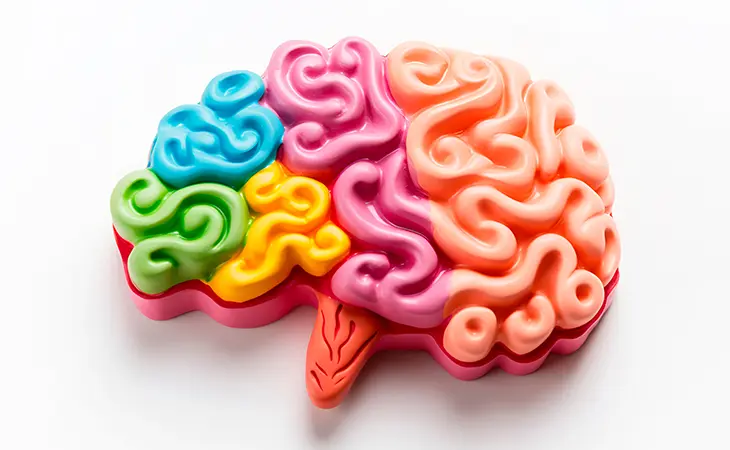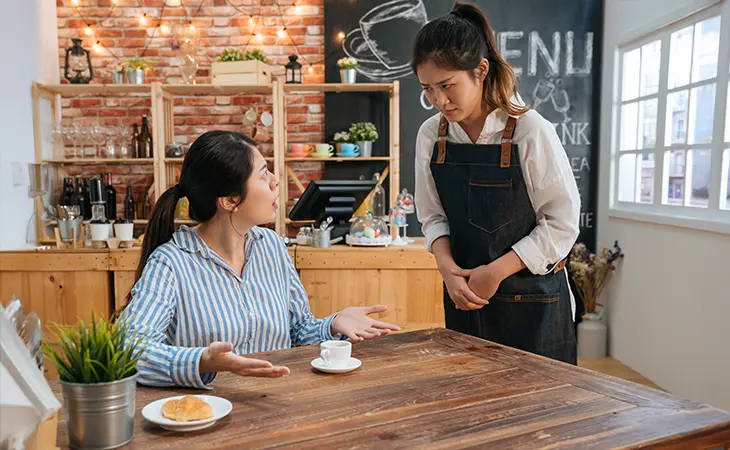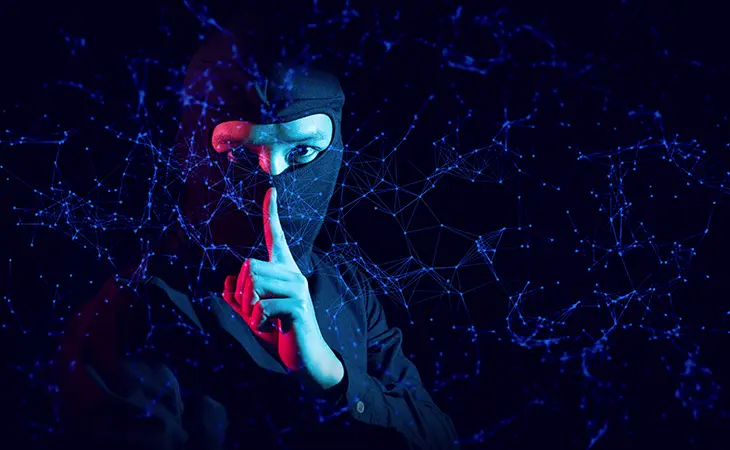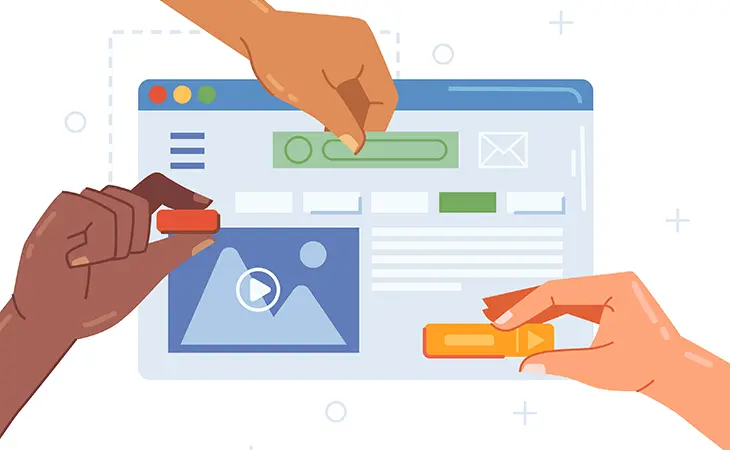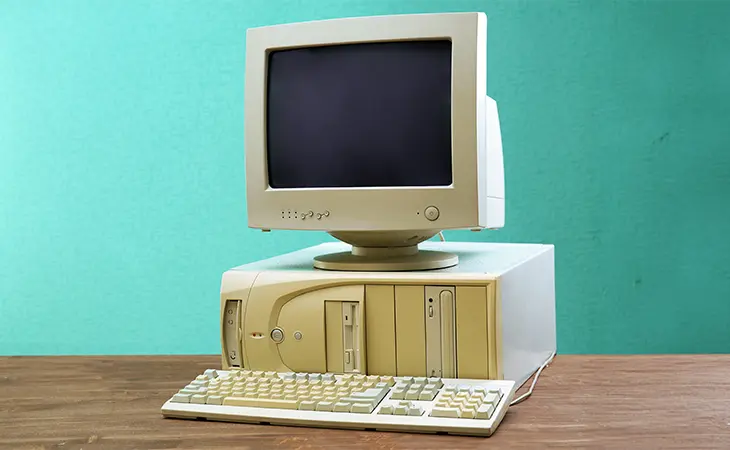Why Color Isn’t Just Pretty Decoration
When a customer lands on your website, they decide in 0.05 seconds whether to trust you or bounce. You think they’re reading your headline that fast? Nope. They’re reacting to design, and the psychology of color in web design is one of the loudest voices in that split second.
Color sets the tone before a single word gets read. It says “this business feels safe” or “hmm, something feels off here.” That gut reaction matters because trust is the gateway to sales. A study from Stanford showed that 75% of people judge a business’s credibility based on design alone. You don’t get to play catch-up later if your palette fails upfront.
The Fast Food Effect, Why Red and Yellow Make You Hungry
Let’s talk fries and burgers. McDonald’s didn’t pick red and yellow because it looked “cute.” They picked it because those colors hack your brain.
Red stimulates appetite and creates urgency. That’s why ketchup bottles are red, it screams “bite now.”
Yellow triggers feelings of happiness, warmth, and friendliness. Combine that with fries in golden packaging, and you’ve got comfort food vibes on tap.
McDonald’s basically trained us all to associate red + yellow with fast, tasty satisfaction. Now you’ll notice other fast food chains – Burger King, Wendy’s, In-N-Out – they all borrow from the same playbook.
Bring it back to web design: if you’re a restaurant in Pembroke Pines, sprinkling those warm tones across your menu section online isn’t just aesthetic, it’s psychology pushing customers toward an order.
Blue = Trust, Green = Growth
Now flip it. Banks, insurance companies, hospitals, they lean on blue for a reason. Blue signals calm, security, and reliability. That’s why Chase, PayPal, and American Express all live in blue branding. They want you to feel like your money is safe.
Green, on the other hand, taps into health and growth. Whole Foods built their entire brand around that idea. When you see green in web design, you subconsciously think fresh, natural, eco-friendly.
For small businesses, this isn’t theory. A dentist using soft blues and greens online is miles ahead of a competitor rocking harsh reds that make the site feel more like a warning sign.
Warm vs. Cool: Picking Your Emotional Lane
Every color has emotional baggage, good or bad. The psychology of color in web design is about knowing what feelings you’re inviting in.
Warm Colors (Red, Orange, Yellow): Urgency, excitement, appetite, cheer. Perfect for restaurants, retailers, or promotions.
Cool Colors (Blue, Green, Purple): Trust, relaxation, stability, growth. Best for finance, healthcare, eco businesses, wellness.
Neutrals (Black, White, Gray): Professional, modern, minimalist. Great as a backdrop to make your accents pop.
A smart design balances both. For example, you might use a calm blue as your site’s main base, but introduce a bold red button for your call-to-action. That way, your customer feels safe overall, but gets the nudge to act when it matters.
Conversions Hide in the Details
Even the smallest details matter. HubSpot ran a study and found that switching a button color from green to red boosted conversions by 21%. Why? Because the red stood out better against the site’s background.
That’s the part people underestimate. The psychology of color in web design is about big-picture branding, sure, but also about micro-decisions. A CTA button, a hover state, a link color. Each one carries weight.
Stories From the Real World
We once worked with a yoga studio that had a black and gray site. Now, yoga is about peace and growth, but their site looked like a car dealership. After redesigning with softer greens and calming blues, not only did engagement rise, but their membership sign-ups doubled in 60 days.
Another case: a local café in Coral Springs swapped out their dark brown headers for a warm orange-and-cream combo. Their online orders spiked 22% in just two months. That wasn’t coincidence, it was color working as silent persuasion.
The Psychology You Can’t Ignore
Red = Action. Perfect for “Book Now” or “Add to Cart.” (Beware: Red is also the universal color for Stop, so use sparingly).
Yellow = Optimism. Great for highlights or accents, but overdo it and you look cheap.
Blue = Trust. Ideal for service-based businesses where credibility is everything.
Green = Health + Growth. Excellent for eco-friendly or finance businesses.
Black = Luxury. Use sparingly unless you’re aiming for high-end vibes.
The psychology of color in web design is about making sure these associations line up with your business goals.
Final Thoughts
The psychology of color in web design is powerful because it shapes emotions before words even enter the picture. From McDonald’s red-and-yellow hunger triggers to banks bathing in blue to signal safety, the colors you pick are silent salespeople.
Your website isn’t just about “looking good.” It’s about building trust, sparking emotion, and guiding people toward action. Choose wisely, stay consistent, and test what works, because the right palette doesn’t just impress visitors, it impacts sales.
Further Reading
- Rocket Web Designer – The Real Cost of a Cheap Website (And Why It Hurts More in 2025)
- Rocket Web Designer – Your Website Was Fine 5 Years Ago – But The Internet Moved On
- GreenGeeks – How Color Psychology Affects Web Design & Conversions
- Flux Academy – The Psychology of Color: How Valuable Web Designers Choose Colors
- Smashing Magazine – The Psychology of Color in UX and UI Design
